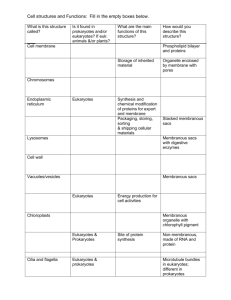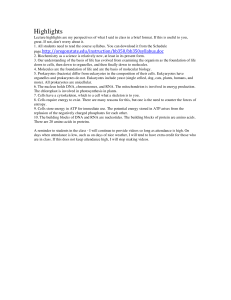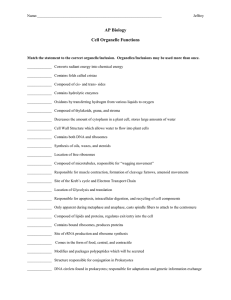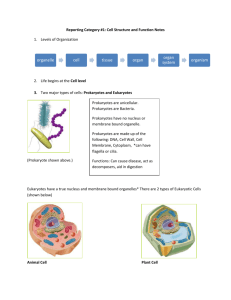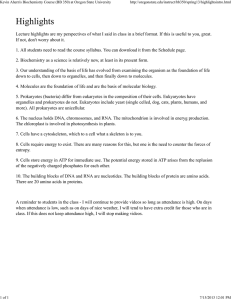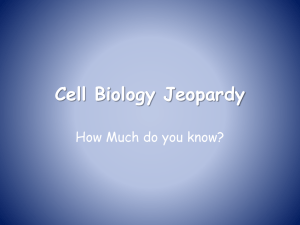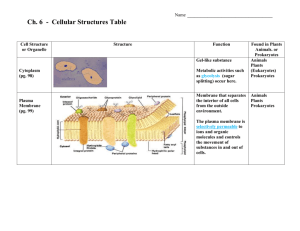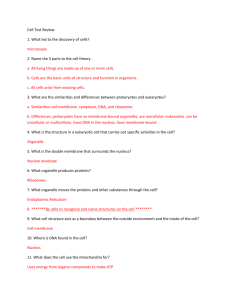General Biology: Cell Theory & Cell Structure Review
advertisement
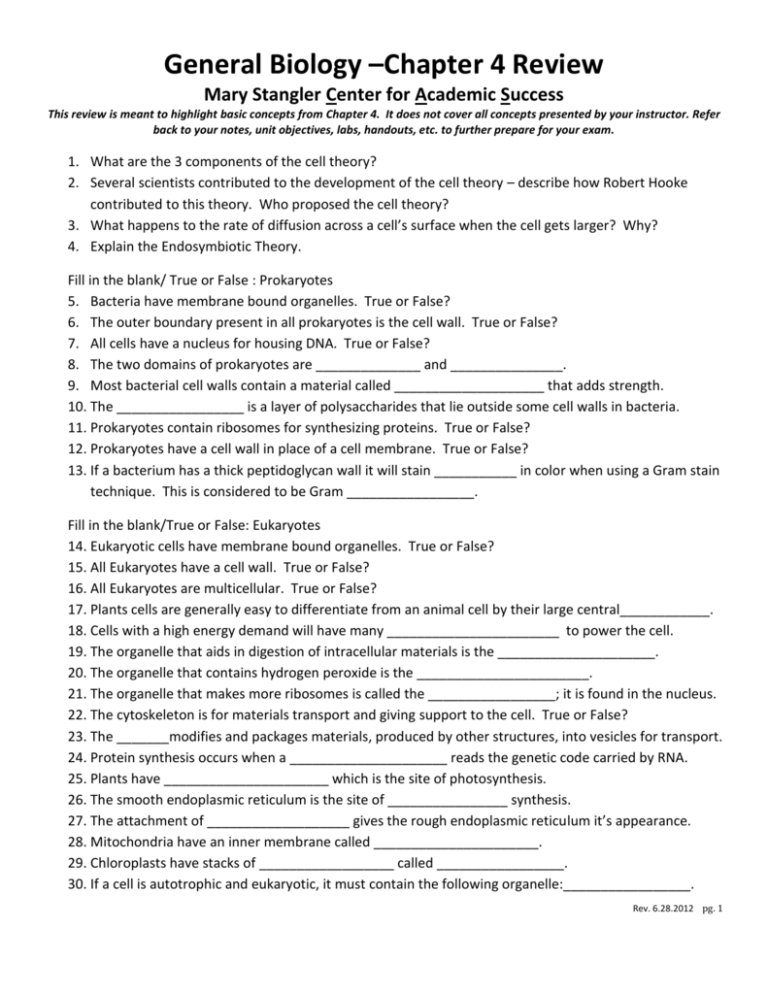
General Biology –Chapter 4 Review Mary Stangler Center for Academic Success This review is meant to highlight basic concepts from Chapter 4. It does not cover all concepts presented by your instructor. Refer back to your notes, unit objectives, labs, handouts, etc. to further prepare for your exam. 1. What are the 3 components of the cell theory? 2. Several scientists contributed to the development of the cell theory – describe how Robert Hooke contributed to this theory. Who proposed the cell theory? 3. What happens to the rate of diffusion across a cell’s surface when the cell gets larger? Why? 4. Explain the Endosymbiotic Theory. Fill in the blank/ True or False : Prokaryotes 5. Bacteria have membrane bound organelles. True or False? 6. The outer boundary present in all prokaryotes is the cell wall. True or False? 7. All cells have a nucleus for housing DNA. True or False? 8. The two domains of prokaryotes are ______________ and _______________. 9. Most bacterial cell walls contain a material called ____________________ that adds strength. 10. The _________________ is a layer of polysaccharides that lie outside some cell walls in bacteria. 11. Prokaryotes contain ribosomes for synthesizing proteins. True or False? 12. Prokaryotes have a cell wall in place of a cell membrane. True or False? 13. If a bacterium has a thick peptidoglycan wall it will stain ___________ in color when using a Gram stain technique. This is considered to be Gram _________________. Fill in the blank/True or False: Eukaryotes 14. Eukaryotic cells have membrane bound organelles. True or False? 15. All Eukaryotes have a cell wall. True or False? 16. All Eukaryotes are multicellular. True or False? 17. Plants cells are generally easy to differentiate from an animal cell by their large central____________. 18. Cells with a high energy demand will have many _______________________ to power the cell. 19. The organelle that aids in digestion of intracellular materials is the _____________________. 20. The organelle that contains hydrogen peroxide is the _______________________. 21. The organelle that makes more ribosomes is called the _________________; it is found in the nucleus. 22. The cytoskeleton is for materials transport and giving support to the cell. True or False? 23. The _______modifies and packages materials, produced by other structures, into vesicles for transport. 24. Protein synthesis occurs when a _____________________ reads the genetic code carried by RNA. 25. Plants have ______________________ which is the site of photosynthesis. 26. The smooth endoplasmic reticulum is the site of ________________ synthesis. 27. The attachment of ___________________ gives the rough endoplasmic reticulum it’s appearance. 28. Mitochondria have an inner membrane called ______________________. 29. Chloroplasts have stacks of __________________ called _________________. 30. If a cell is autotrophic and eukaryotic, it must contain the following organelle:_________________. Rev. 6.28.2012 pg. 1
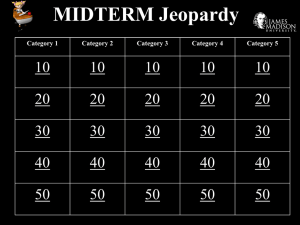
![Cell Game Board [10/16/2015]](http://s3.studylib.net/store/data/007063627_1-08082c134bbc8d8b7ad536470fbed9dc-300x300.png)
